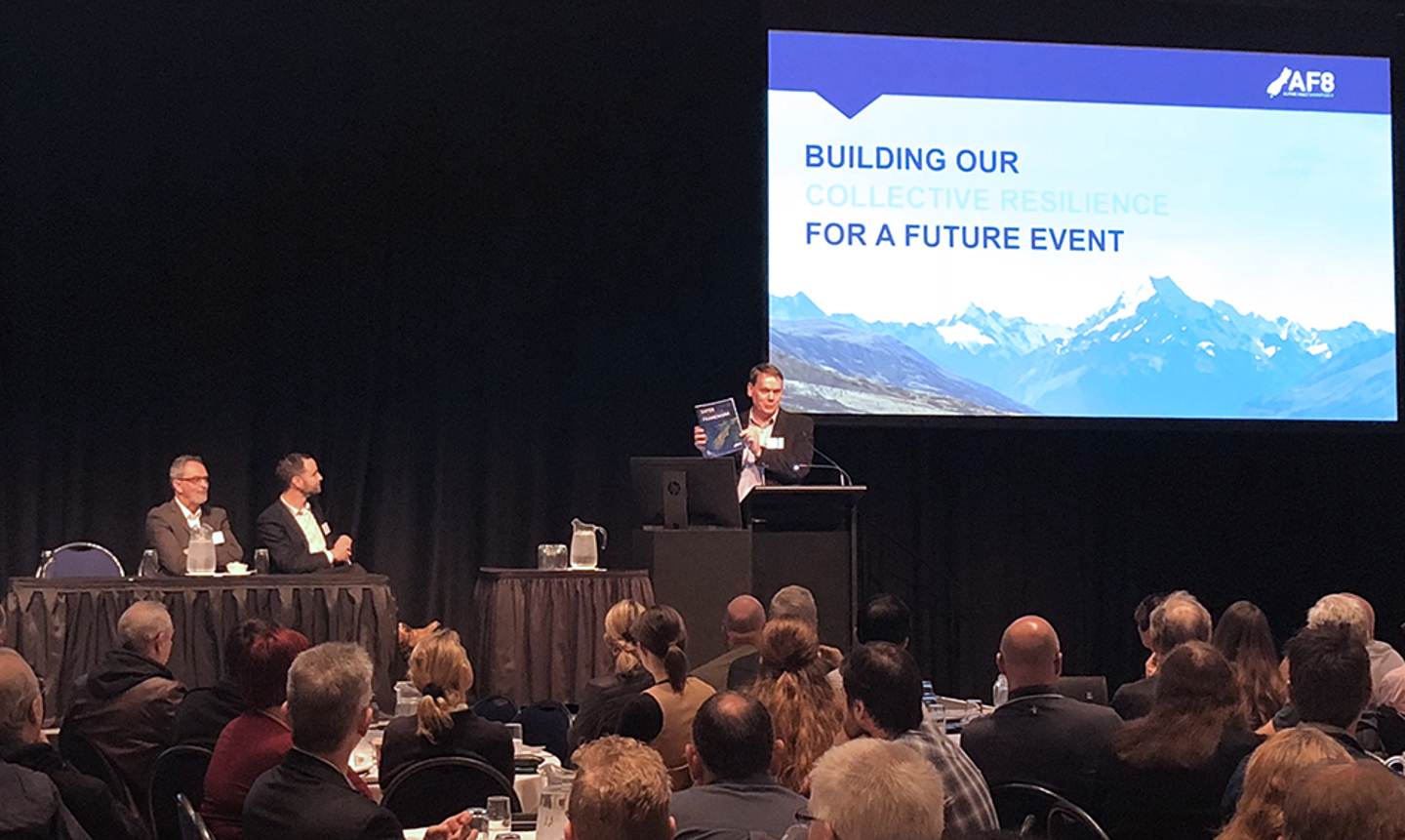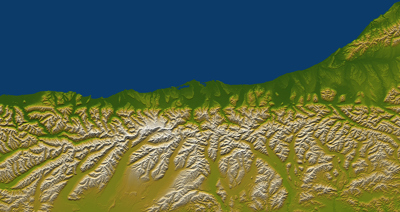
The SAFER Framework was launched at the National Lifelines Utilities Forum 2018.
This morning we launched the SAFER Framework at the National Lifelines Utilities Forum in Wellington.
The South Island Alpine Fault Earthquake Response (SAFER) Framework sets out a concept for coordination in response planning to prepare for an Alpine Fault magnitude 8 earthquake and associated hazards. It is the result of two years of effort by AF8, our partners and stakeholders.
Scientists have established that the Alpine Fault has an unusually regular history of producing large earthquakes, and modelling shows that the whole of the South Island will be affected to a greater or lesser extent by the next rupture and its impacts on communities and infrastructure. Because of the expected widespread disruption and damage, a well planned and coordinated response will be essential.
SAFER leads by example, demonstrating the value of considering preparedness as a collaborative activity. The general public should also be prepared, not only in their own homes but as members of their community where strong networks will build resilience. The impacts of the next Alpine Fault earthquake will require a unified response across the South Island.

The SAFER Framework was launched at the National Lifelines Utilities Forum 2018.
The Chair of the Project AF8 Steering Group, Angus McKay from Emergency Management Southland, says “SAFER provides a concept of coordination of response and priority setting across all six South Island Civil Defence Emergency Management (CDEM) Groups and their partner organisations in the first seven days of response. It is not intended to replace existing plans within agencies but to provide a coordinated picture of response across the South Island.
“This concept of coordination is based on the robust and credible AF8 hazard impact scenario developed with our science partners at universities and GNS Science. We workshopped the scenario with CDEM Groups and partner organisations around the South Island, identifying the foreseeable impacts on communities and our collective capabilities, to build a coordinated approach to response.”
The Framework document includes the scenario and is accompanied by an introduction video, explaining the Framework development process, the science behind it and what it means for stakeholders, partners and communities.
SAFER is intended as a constantly evolving framework that will be reviewed following the national Alpine Fault exercise in the 2020. The Framework will be fully reviewed five years after it is adopted or after any events or changes in policy, responsibilities or organisational arrangements with a bearing on the Framework.
Thanks to the many, many individuals, organisations and groups who have contributed to SAFER, through workshops, korero, research, engagement and funding – none of this would be possible without your ongoing collaboration.

The safety of Aotearoa New Zealand’s hydro scheme dams in the face of a large Alpine Fault earthquake is a recurring concern raised at many AF8 Roadshow events. We talked to a chief engineer at Meridian Energy about dam safety.

Magnificent mountains with precipitous snowy peaks may be what Te Tai Poutini, the West Coast of Te Waipounamu, the South Island of Aotearoa, is most famous for. But the flatter land at the foot of the mountains is what’s most valuable to residents, farmers, and travellers of the West Coast. A paper by Kiwi earth scientists highlights the landscape changes expected for this precious, habitable land after large earthquakes.

We are seeking expressions of interest for the newly vacant Science Lead position. The AF8 Programme is seeking a suitably qualified scientist with active Alpine Fault hazard and risk-related research, and strong networks and connections across the science and emergency management sectors.